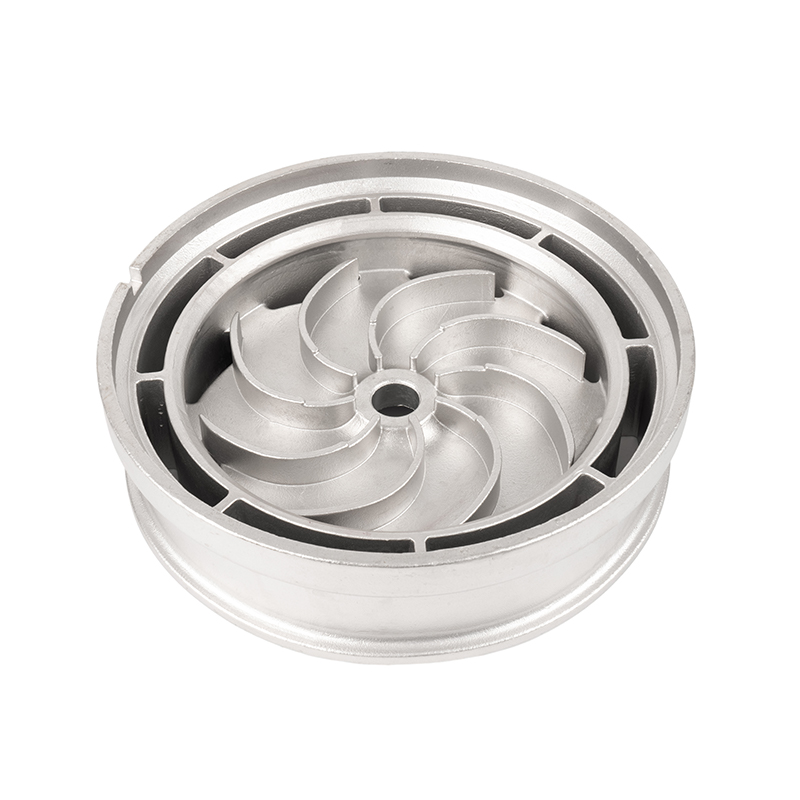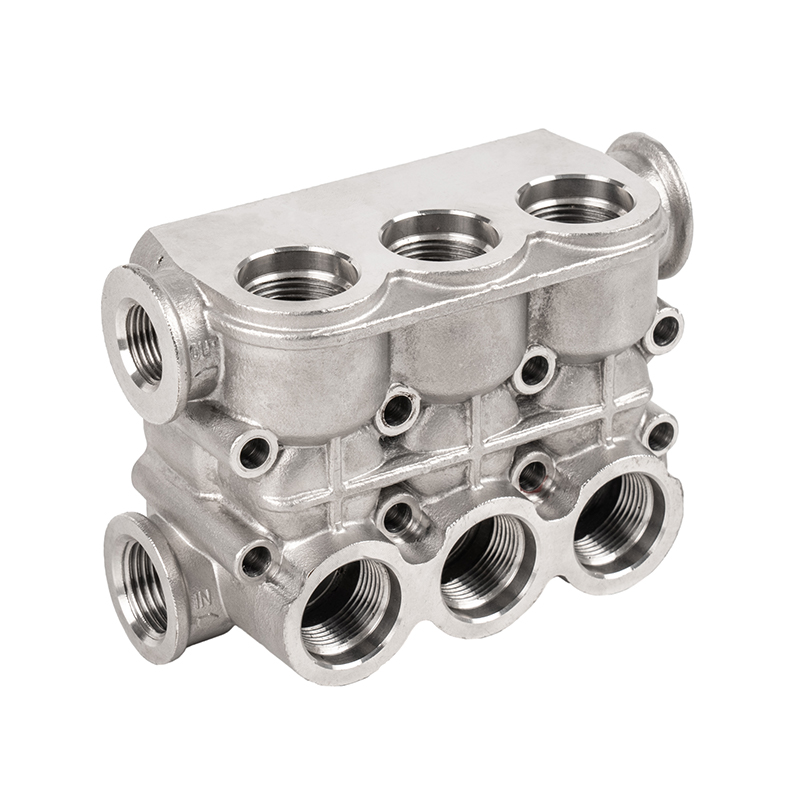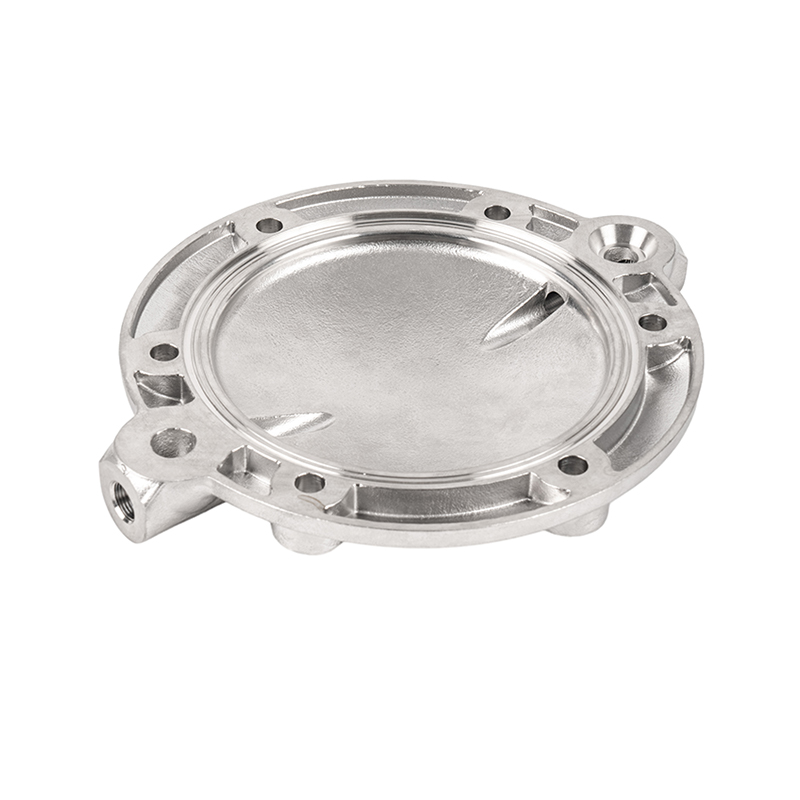How do environmental factors, such as temperature and humidity, affect the performance of pneumatic mechanical castings?
Environmental factors like temperature and humidity can significantly impact the performance of pneumatic mechanical castings:
Temperature: Pneumatic mechanical castings are engineered to withstand specific temperature ranges based on the materials used in their construction. High temperatures can cause thermally induced stresses, leading to material softening or deformation, particularly in polymers and certain metals. This softening can compromise the structural integrity of the castings and result in dimensional inaccuracies, affecting their performance within pneumatic systems. Conversely, low temperatures can induce brittleness in materials, increasing the risk of fracture or failure, especially in components subjected to mechanical stress. Proper material selection, thermal insulation, and heat dissipation mechanisms must be implemented to mitigate the effects of temperature extremes on pneumatic mechanical castings.
Humidity: Elevated humidity levels pose a significant risk to pneumatic mechanical castings, particularly those containing metal components susceptible to corrosion. Moisture in the air can facilitate the formation of rust or oxidation on exposed surfaces, compromising the mechanical properties and surface finish of the castings. Corrosion can weaken structural elements, impairing functionality and potentially leading to catastrophic failure, particularly in critical applications such as fluid control systems. Implementing corrosion-resistant materials, protective coatings, and effective sealing measures can mitigate the detrimental effects of humidity on pneumatic mechanical castings, ensuring prolonged service life and reliable performance.
Moisture: Moisture ingress is a common concern for pneumatic mechanical castings, particularly those operating in environments with high humidity or exposure to water. Internal cavities, joints, and interfaces are vulnerable to moisture penetration, which can accelerate corrosion and degrade internal components over time. The presence of moisture can compromise the lubrication of moving parts, increasing friction and wear, thereby reducing the efficiency and lifespan of pneumatic systems. Employing robust sealing solutions, moisture-resistant materials, and regular maintenance protocols are essential to prevent moisture ingress and preserve the performance and longevity of pneumatic mechanical castings in challenging operating conditions.
Condensation: Temperature differentials between the environment and the internal components of pneumatic mechanical castings can lead to the formation of condensation, especially during startup or shutdown cycles. Condensation can accumulate within enclosed spaces, promoting corrosion and creating a conducive environment for microbial growth, which can further degrade materials and compromise system integrity. Effective ventilation, dehumidification, and moisture management strategies are imperative to mitigate condensation-related issues and maintain optimal operating conditions within pneumatic mechanical castings. Incorporating desiccants or humidity-absorbing materials can help mitigate moisture accumulation and prevent associated performance degradation.
Thermal Expansion: Pneumatic mechanical castings are subjected to thermal expansion and contraction cycles due to temperature fluctuations during operation. Differential expansion rates between materials can induce internal stresses, leading to dimensional changes, seal failures, or mechanical binding within pneumatic systems. To mitigate the effects of thermal cycling, designers must carefully select materials with compatible thermal properties and incorporate design features such as expansion joints, flexible connections, and thermal insulation to accommodate thermal expansion without compromising structural integrity or performance. Employing precision machining and assembly techniques can minimize tolerances and ensure consistent performance across varying temperature conditions, enhancing the reliability and longevity of pneumatic mechanical castings in diverse operational environments.
Temperature: Pneumatic mechanical castings are engineered to withstand specific temperature ranges based on the materials used in their construction. High temperatures can cause thermally induced stresses, leading to material softening or deformation, particularly in polymers and certain metals. This softening can compromise the structural integrity of the castings and result in dimensional inaccuracies, affecting their performance within pneumatic systems. Conversely, low temperatures can induce brittleness in materials, increasing the risk of fracture or failure, especially in components subjected to mechanical stress. Proper material selection, thermal insulation, and heat dissipation mechanisms must be implemented to mitigate the effects of temperature extremes on pneumatic mechanical castings.
Humidity: Elevated humidity levels pose a significant risk to pneumatic mechanical castings, particularly those containing metal components susceptible to corrosion. Moisture in the air can facilitate the formation of rust or oxidation on exposed surfaces, compromising the mechanical properties and surface finish of the castings. Corrosion can weaken structural elements, impairing functionality and potentially leading to catastrophic failure, particularly in critical applications such as fluid control systems. Implementing corrosion-resistant materials, protective coatings, and effective sealing measures can mitigate the detrimental effects of humidity on pneumatic mechanical castings, ensuring prolonged service life and reliable performance.
Moisture: Moisture ingress is a common concern for pneumatic mechanical castings, particularly those operating in environments with high humidity or exposure to water. Internal cavities, joints, and interfaces are vulnerable to moisture penetration, which can accelerate corrosion and degrade internal components over time. The presence of moisture can compromise the lubrication of moving parts, increasing friction and wear, thereby reducing the efficiency and lifespan of pneumatic systems. Employing robust sealing solutions, moisture-resistant materials, and regular maintenance protocols are essential to prevent moisture ingress and preserve the performance and longevity of pneumatic mechanical castings in challenging operating conditions.
Condensation: Temperature differentials between the environment and the internal components of pneumatic mechanical castings can lead to the formation of condensation, especially during startup or shutdown cycles. Condensation can accumulate within enclosed spaces, promoting corrosion and creating a conducive environment for microbial growth, which can further degrade materials and compromise system integrity. Effective ventilation, dehumidification, and moisture management strategies are imperative to mitigate condensation-related issues and maintain optimal operating conditions within pneumatic mechanical castings. Incorporating desiccants or humidity-absorbing materials can help mitigate moisture accumulation and prevent associated performance degradation.
Thermal Expansion: Pneumatic mechanical castings are subjected to thermal expansion and contraction cycles due to temperature fluctuations during operation. Differential expansion rates between materials can induce internal stresses, leading to dimensional changes, seal failures, or mechanical binding within pneumatic systems. To mitigate the effects of thermal cycling, designers must carefully select materials with compatible thermal properties and incorporate design features such as expansion joints, flexible connections, and thermal insulation to accommodate thermal expansion without compromising structural integrity or performance. Employing precision machining and assembly techniques can minimize tolerances and ensure consistent performance across varying temperature conditions, enhancing the reliability and longevity of pneumatic mechanical castings in diverse operational environments.


 English
English Español
Español русский
русский 中文简体
中文简体

















